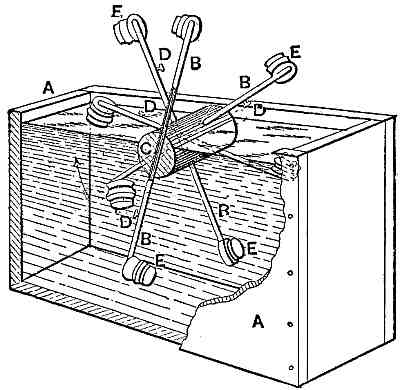Air
transfer in submerged wheel
Air transfer in
submerged wheel. A, in the cut, is a tank containing water, as shown.
The hollow arms, B, communicate with a hollow shaft, C, and the
bellows, E, screw valves, D, being employed to increase or diminish the
area of the passages in the hollow arms B.

Each of the
bellows, E, carries a weight, which, during a portion of
the revolution, compresses the bellows and forces the air out of it
through the hollow arms, B, and shaft, C, into bellows upon the
opposite side of the wheel, which, being inverted, are expanded by the
action of the weights, and, their buoyancy being thus increased on one
side of the wheel, the latter is expected to turn constantly by virtue
of the effort of the expanded bellows to rise to the surface.
(Subsection 942, from
p.377)
From: Gardner D. Hiscox, M.E., Mechanical Appliances and Novelties of Construction (1927), Norman W. Henley Publ. Co.






